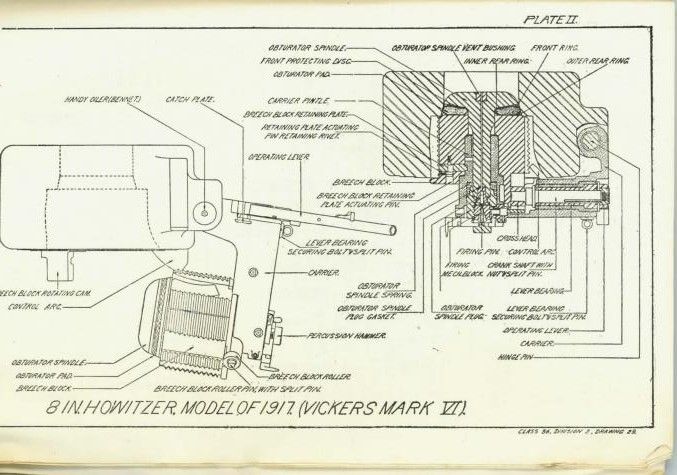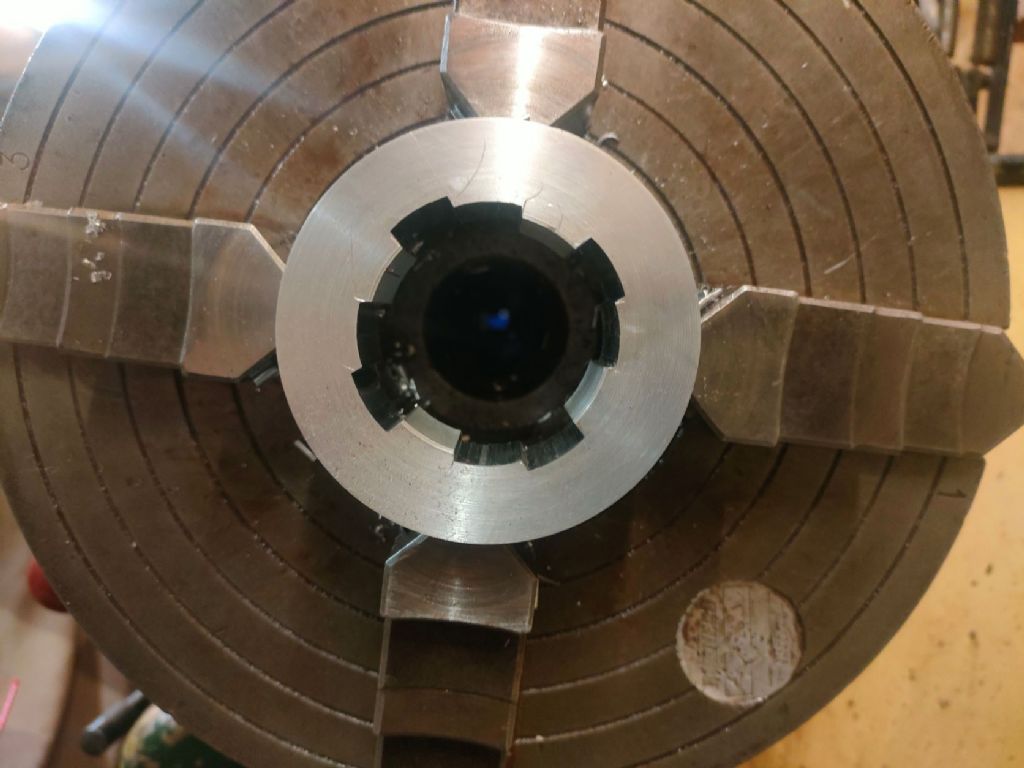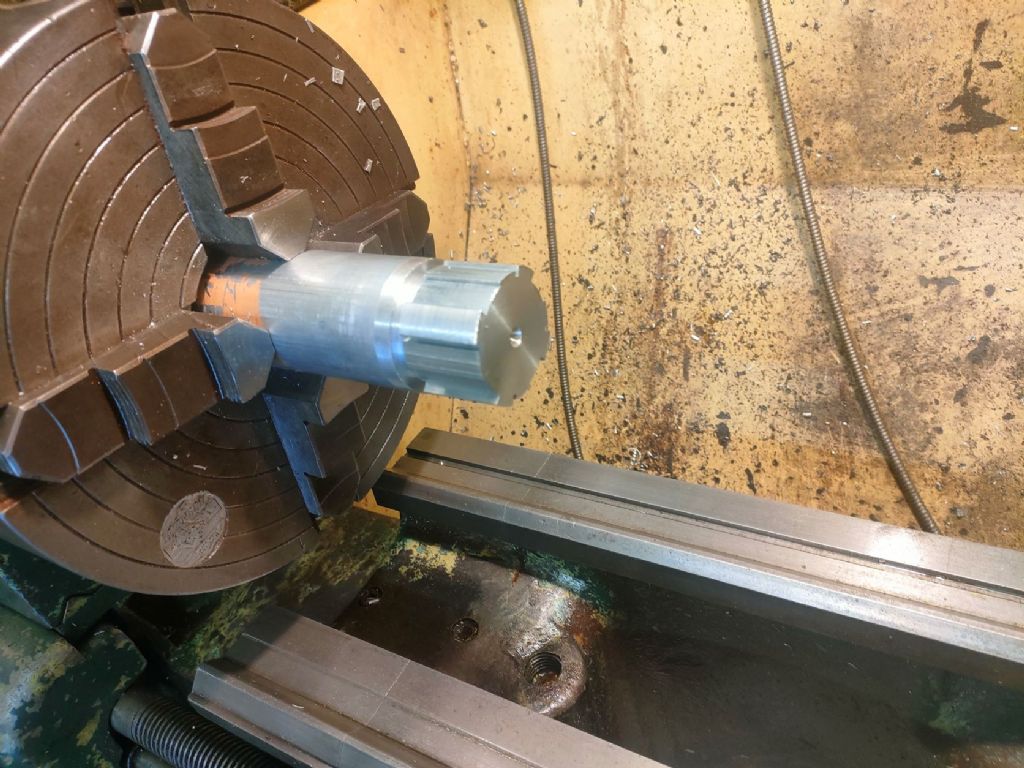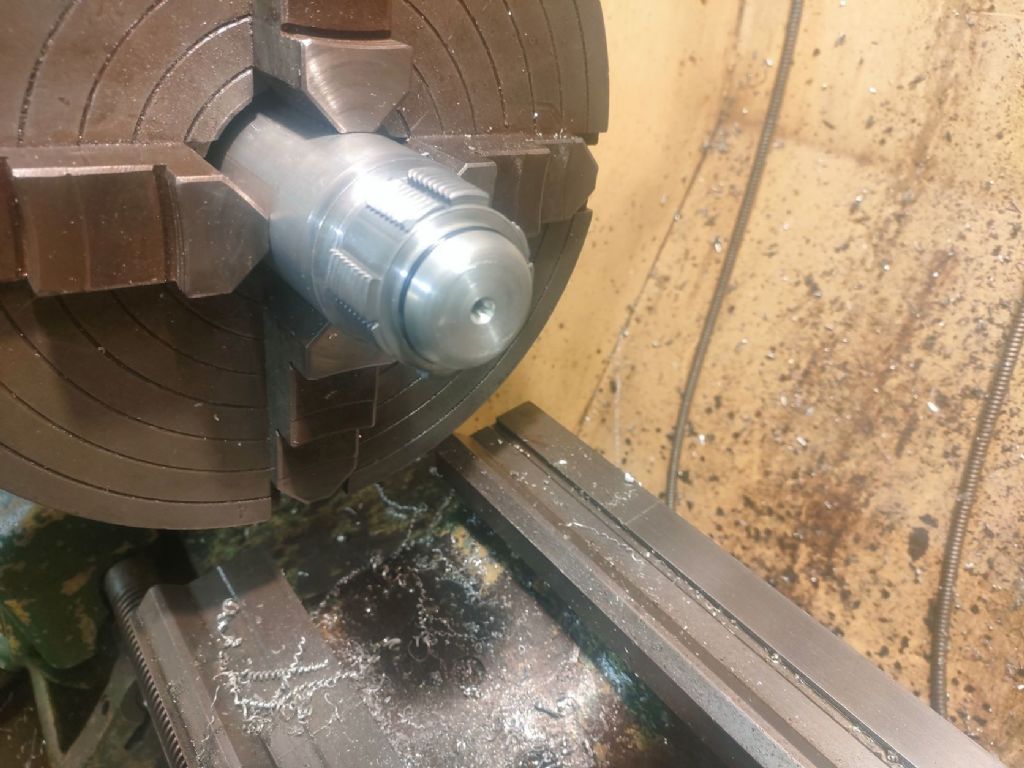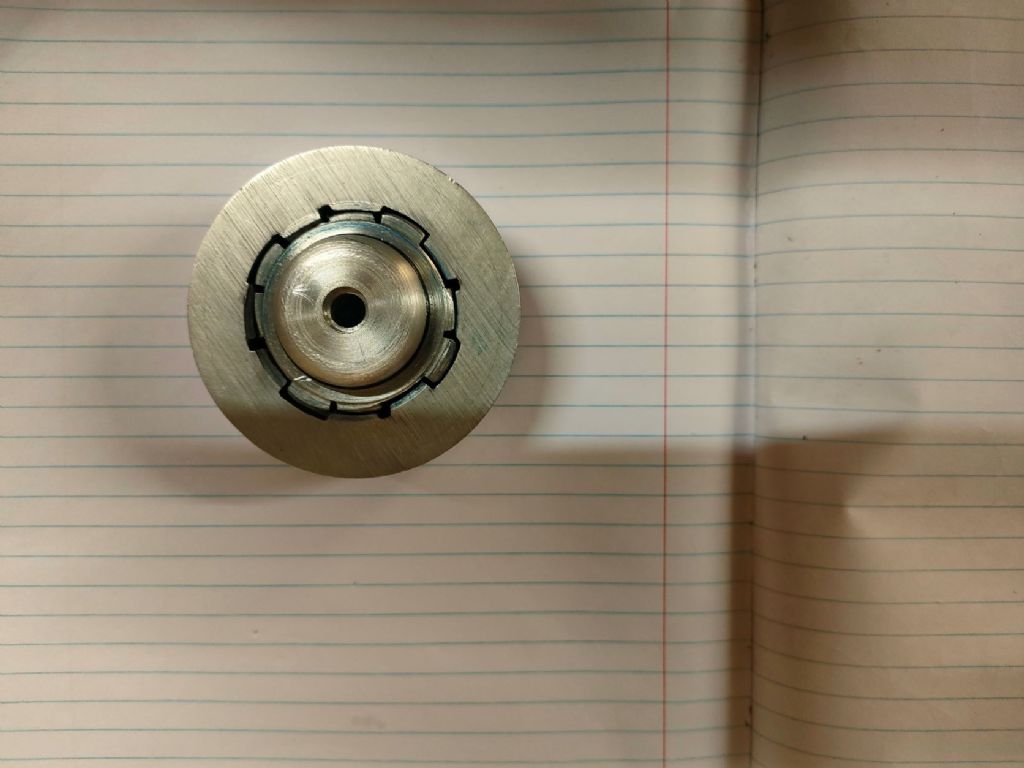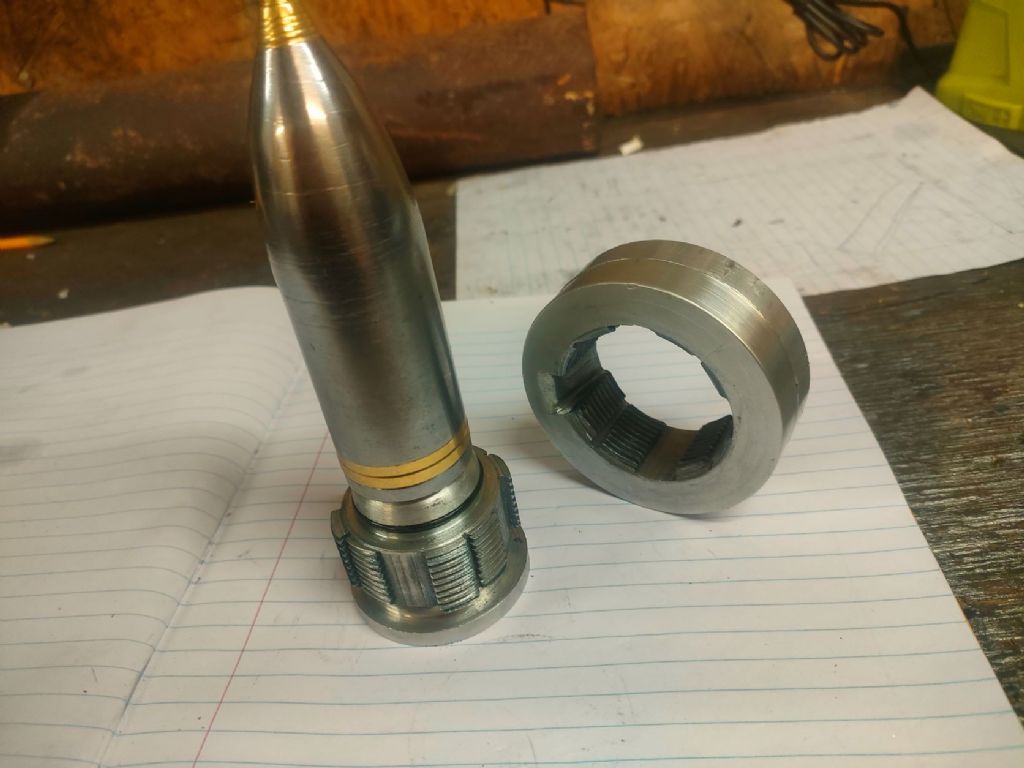Posted by SillyOldDuffer on 19/05/2022 17:04:12:
….
Interesting that the Naval breech is considerably more complicated than the land version. In addition to hydraulic power assist, it allows electrical firing with a safety interlock to prevent the gun going off before the breech is closed.
I wonder how reliable the obturator pads were? I'd expect a lot of flame to escape through the breech if a pad leaked.
Dave
With the mass of components varying roughly with cube of calibre, mechanical assistance became essential in calibres over 6 – 8 inch. The 8" round weighed about 250 lb, the 15" 1938 lb. Even if the 15" breech plug had been of proportionate length to the 8" howitzer's it'd still have weighed over 7 times as much.
Plus the naval guns were working close to technical limits of pressure and velocity, whereas howitzers worked at more modest levels, and required longer barrel lives for extended barrages.
Of course, Jolly Jack Tar was more the apple of the public and political eye than Tommy Atkins, too, and his development and construction budgets might have been more generous.
Catastrophes relating to shipboard cordite handling and storage – in and out of battle – are well known, but I've not heard of turret incidents triggered specifically by leaking obturator pads. Something happened to one of the County Class 8" cruisers that killed a turret in gunnery practice, but I don't know details. Certainly if a pad leaked, you'd expect it torch out the turret fatally and risk producing a flash in stored charges that could threaten the magazine. The only one I can think of was relatively modern on, one of the last US battleships in about '89 or '90, and I think the breech hadn't been correctly closed. There must've been a failure of some safety interlock for that to happen, not AFAIK obturator failure.
Peter Bowers 3.


